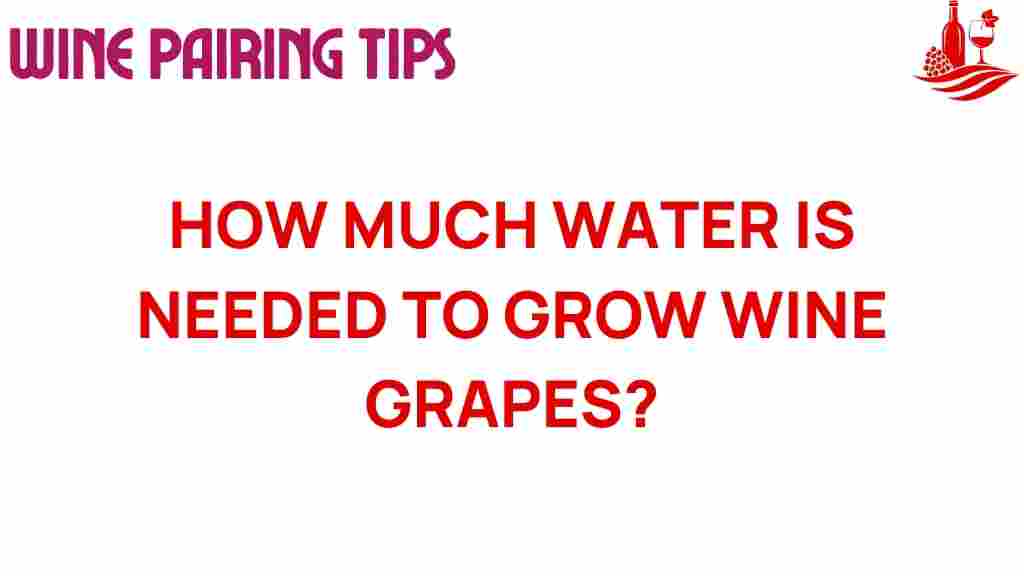Water Requirements for Wine Grapes: Understanding Vineyard Irrigation
Wine production is as much about art as it is about science, and at the heart of a great vineyard lies a fundamental resource: water. Understanding the water requirements of wine grapes is essential for successful grape cultivation. This article explores how much water wine grapes need, the best practices for vineyard irrigation, the impact of climate on soil moisture, and sustainable farming techniques to enhance grape quality.
The Crucial Role of Water in Grape Quality
Water plays a vital role in the life cycle of grapevines. It not only affects vine growth but also influences the flavor and quality of the grapes. Adequate water supply ensures:
- Healthy vine growth and development
- Optimal fruit set and ripening
- Improved grape quality, including sugar levels and acidity
However, too much or too little water can have adverse effects, leading to poor yields and subpar wine quality. Thus, knowing the appropriate water requirements is essential for any vineyard manager.
The Water Needs of Wine Grapes
The water requirements for wine grapes can vary significantly depending on several factors:
- Climate: Hotter climates generally require more water.
- Soil Type: Sandy soils drain quickly, while clay soils retain moisture.
- Vine Age: Older vines often have deeper root systems and may require less frequent watering.
- Growth Stage: Vines have different water requirements during flowering, fruit set, and ripening.
On average, a vineyard may require between 20 to 30 inches of water per year, but this can fluctuate based on the aforementioned factors. Monitoring soil moisture is crucial in determining when and how much to irrigate.
Vineyard Irrigation Methods
There are several methods of vineyard irrigation, each with its own advantages and disadvantages:
- Drip Irrigation: This method delivers water directly to the root zone, minimizing waste and evaporation. It is highly efficient and promotes deep root growth.
- Sprinkler Systems: These can cover large areas but may lead to water loss through evaporation. They are effective in younger vineyards where roots are shallow.
- Flood Irrigation: An older method that involves flooding the vineyard with water. While it can be effective in certain regions, it is less efficient and can lead to soil erosion.
- Rainfed Systems: Some vineyards rely solely on rainfall. This is more sustainable but risky in regions with variable rainfall patterns.
Step-by-Step Guide to Managing Vineyard Irrigation
Effectively managing vineyard irrigation involves several steps:
- Assess Water Needs: Understand the specific water requirements of your wine grape varieties and local climate conditions.
- Soil Testing: Conduct soil moisture tests to determine the current moisture levels and water retention capacity.
- Choose an Irrigation Method: Select the most suitable vineyard irrigation method based on your vineyard’s needs.
- Monitor and Adjust: Regularly check soil moisture and vine health. Adjust your irrigation schedule as necessary.
- Implement Sustainable Practices: Use mulching, cover crops, and organic amendments to enhance soil health and moisture retention.
Climate Impact on Vineyard Water Requirements
Climate change has a profound impact on grape cultivation. Changes in temperature and precipitation patterns can alter the water requirements for vineyards. Some key impacts include:
- Increased Evaporation: Higher temperatures lead to increased evaporation rates, requiring more frequent irrigation.
- Altered Rainfall Patterns: Irregular rainfall can lead to drought conditions, stressing the vines.
- Shifts in Grape Quality: Changes in water availability can affect the sugar and acid balance in grapes, impacting wine flavor.
Vineyard managers must adapt to these changes by implementing better water management practices and possibly altering their vineyard locations or grape varieties.
Sustainable Farming Practices in Vineyard Irrigation
Implementing sustainable farming practices is essential for maintaining vineyard health and minimizing environmental impact. Here are some strategies:
- Rainwater Harvesting: Collect rainwater to supplement irrigation needs, reducing reliance on groundwater.
- Soil Conservation: Use cover crops and organic matter to improve soil structure and moisture retention.
- Precision Irrigation: Utilize technology such as soil moisture sensors to apply water only when necessary.
- Crop Diversity: Planting diverse crops can improve soil health and reduce water needs.
By adopting these practices, vineyard managers can ensure long-term sustainability and enhance grape quality.
Troubleshooting Common Irrigation Issues
Even with the best plans, issues can arise in vineyard irrigation. Here are some common problems and solutions:
- Problem: Overwatering leading to root rot.
- Solution: Adjust the irrigation schedule and improve drainage in the vineyard.
- Problem: Underwatering causing stress to vines.
- Solution: Increase the frequency of irrigation and monitor soil moisture levels more closely.
- Problem: Uneven water distribution.
- Solution: Regularly check irrigation systems for clogs and ensure proper coverage.
Conclusion
Understanding the water requirements of wine grapes is crucial for producing high-quality wines. By implementing effective vineyard irrigation practices and considering the impact of climate on soil moisture, vineyard managers can optimize grape cultivation while embracing sustainable farming methods. With the right approach, it is possible to navigate the challenges of water management and enhance both the quality of the grapes and the sustainability of the vineyard.
For more information on sustainable farming practices, check out this resource.
For further reading on vineyard management, visit this link.
This article is in the category Tips and created by Wine Pairing Tips Team
